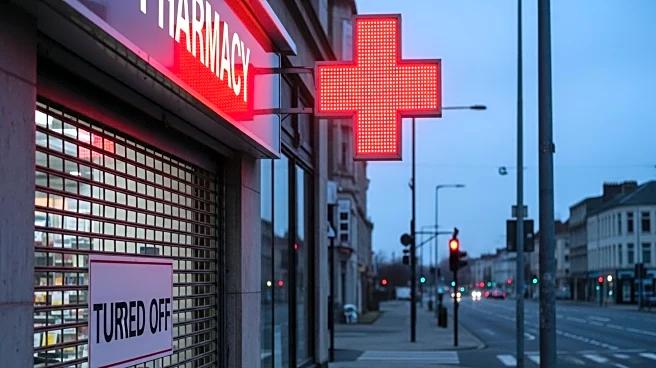What's Happening?
Rite Aid, once a major pharmacy chain in the U.S., has officially closed all its locations nationwide. The closure follows a second bankruptcy filing in May 2025, after the company faced high debt, declining revenue, and costs related to opioid litigation. Rite Aid settled the opioid lawsuit for $410 million, addressing allegations of violating controlled substance regulations. Founded in Pennsylvania in 1962, Rite Aid was the third-largest drug store chain in the U.S. The final stores, located in Washington and Oregon, closed on September 29, marking the end of the chain's operations.
Why It's Important?
The closure of Rite Aid marks a significant shift in the U.S. pharmacy landscape, reducing competition among major chains. With Rite Aid's exit, CVS and Walgreens remain the dominant players, potentially affecting pricing and service options for consumers. The closure impacts former employees and customers who relied on Rite Aid for prescriptions and health services. The company's downfall highlights the financial and legal challenges faced by businesses involved in opioid litigation, serving as a cautionary tale for other companies in similar situations.
What's Next?
Former Rite Aid customers are advised to request prescription and immunization records and find new pharmacies. The closure may lead to increased business for remaining chains like CVS and Walgreens, as they absorb Rite Aid's customer base. The pharmacy industry may see further consolidation as companies seek to strengthen their market positions. Stakeholders will be monitoring how the remaining chains adapt to the increased demand and whether new entrants will emerge to fill the void left by Rite Aid.












